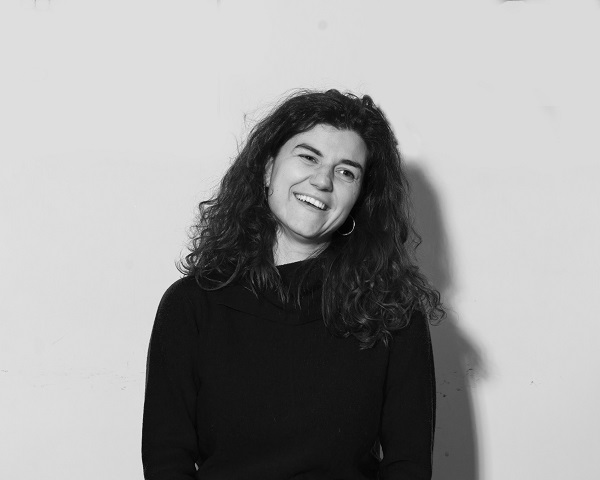When we are writing a review of an art exhibition, we tend to evaluate the overall scenario, especially considering, in addition to the artworks, the overall project work. This cannot be separated from the perfect synergy that is established between the artist, his patron and his curator which is the case of the exhibition «Piano d’ascolto», a solo show by Andreas Zampella, curated by Nicolas Martino at Andrea Festa Fine Art, which can still be visited until 8 July.
Knowing how to decipher a good painting is already in itself an attitude that requires zeal, commitment, and a lot of deepening. On the other hand, the judgment of taste is a process that appears immediate even to the most inexperienced eye. What, then, distinguishes a mature painting from a still unripe one and on the way to a hypothetical growth? For the «most inexperienced eye», writes Nelson Goodman, «the proof of fidelity lies in deception», but «what counts», continues the author of The Languages of Art, «is not to what extent the painting reproduces the object», but to what extent «the painting and the object […] give rise to the same expectations». If it is true that «what deceives depends on what is observed, and what is observed varies with interests and habits», good painting, such as Andreas Zampella’s, considering his artworks as theatrical actions, undermines the need on the part of the viewer to seek a key to certain translation of the image.
The diptych of Surrender Forever (2022), in the wake of what Goodman said, deceives the human eye persuaded by seeing the representation of two hands in the first image and does not notice the deception of the second one which hides its true nature. Are the two palm trees to become bones of deformed limbs, or vice versa? Wondering spontaneously, therefore, about the nature of the title of the painting, one wonders: to what do we surrender forever? Perhaps to the deception of a domestic life that we presume to be able to see?
Listening Plan revolves around the theme of deception. Indeed, it is common to believe that the observer is the authentic spectator of an artwork, which must necessarily be contemplated by his eye. In Everything returns as before (2022), earplugs arranged in series along the door frames, question the conventional roles of actor and spectator. These caps located from the top become in turn spectators of the actions of the people present in the room engaged as they are in the inevitable game of the parts.
At the mercy of eternal subjectivity and searching for an objective answer, the human-being plays a predetermined role within domestic life. It is Zampella himself who invites the eye to accept the presence of a Green Curtain (2022), made of old rags and worn color, within an exhibition space whose original features reflect a domestic environment. Could be an invitation to accept perhaps the deception of representation? The idea of home, as the place of a group of people, burns and seems to go up in flames, such as Red Room (2022), as if it were itself the result of many fictions and that with the curtain down reveals what is its true nature.
If about the scene we discuss where the actors play their role, as users and spectators of the artworks in the exhibition, paraphrasing the words of the sociologist Erving Goffman, these become the roles they identify representing the concept that they have made of themselves, the mask of their true «Ego» that kind of self they would like to be. In Interlocking #2 (2022) pieces of raw meat are enclosed inside resin cylinders in turn inserted inside smooth concrete tubulars. It seems to be almost as if the instinctive Dionysian aspect inherent in the meat was inhibited by the rational and Apollonian element. The technological processualism of the creation of the artificial material (cement) in contrast with the animal instinctuality of meat represents a sort of allegory of art itself, or at least of good art, which precisely in the confusion and shuffling of cards has its secret. A secret, that of art, to which Andreas Zampella gives us access but partially and openly revealing only some of the illusions he concocts which are the most innocent ones – such as his Calendario à trompe-l’oeil – and leaving us, instead, totally at the mercy of the main plot of the supreme machination.
Giulia Pontoriero
Info:
Andreas Zampella, Piano d’ascolto
27/05 – 08/07/2022
Andrea Festa Fine Art
Lungotevere degli Altoviti, 1, Roma
Cover image: Andreas Zampella, Morso sorriso, silicone, flour, stones, 30 x 40cm, 2022, courtesy Andrea Festa Fine Art
 Andreas Zampella, Piano d’ascolto, 2022 – Installation view at Andrea Festa Fine Art, Photo Credits Eleonora Cerri Pecorella, courtesy Andrea Festa Fine Art
Andreas Zampella, Piano d’ascolto, 2022 – Installation view at Andrea Festa Fine Art, Photo Credits Eleonora Cerri Pecorella, courtesy Andrea Festa Fine Art
 Andreas Zampella, Arrendersi per sempre, diptych, 50 x 60cm each, 2022, courtesy Andrea Festa Fine Art
Andreas Zampella, Arrendersi per sempre, diptych, 50 x 60cm each, 2022, courtesy Andrea Festa Fine Art
 Andreas Zampella, Stanza Rossa, 60×70 cm, 202, courtesy Andrea Festa Fine Art
Andreas Zampella, Stanza Rossa, 60×70 cm, 202, courtesy Andrea Festa Fine Art
 Andreas Zampella, Piano d’ascolto, 2022 – Installation view at Andrea Festa Fine Art. Photo Credits: Eleonora Cerri Pecorella, , courtesy Andrea Festa Fine Art
Andreas Zampella, Piano d’ascolto, 2022 – Installation view at Andrea Festa Fine Art. Photo Credits: Eleonora Cerri Pecorella, , courtesy Andrea Festa Fine Art

Graduated in Architectural Sciences at the Sapienza University in Rome, with a master’s degree in Contemporary Art and Management at the Luiss Business School, she currently works as an intern and project manager at Untitled Association. Graduated in Photography and Art Criticism in Bologna, she currently carries on her personal projects and is part of the team of the Forme Uniche cultural project.






NO COMMENT